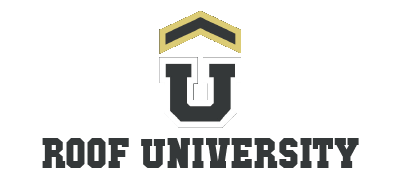Roof underlayment is a critical component of a well-functioning roofing system. It serves as a protective barrier between the roof deck and the external roofing materials. While often hidden beneath shingles, tiles, or metal panels, underlayment is vital in waterproofing and safeguarding the roof structure against the elements.
What is Roof Underlayment?
Roof underlayment is a water-resistant or waterproof layer installed directly onto the roof deck before the final roofing material is applied. It acts as an additional layer of protection, preventing water infiltration in case the outer roofing material is damaged or compromised.
Types of Roof Underlayment
- Asphalt-Saturated Felt:
- Traditionally used and made of paper or fiberglass saturated with asphalt.
- Advantages: Affordable and widely available.
- Limitations: Less durable and prone to tearing compared to modern synthetic options.
- Synthetic Underlayment:
- Made from polymers and engineered for high strength and durability.
- Advantages: Lightweight, tear-resistant, and highly water-resistant.
- Limitations: Higher initial cost compared to felt underlayment.
- Rubberized Asphalt Underlayment:
- A self-adhering, fully waterproof membrane often used in areas prone to leaks.
- Advantages: Excellent waterproofing, ideal for high-risk areas like valleys and eaves.
- Limitations: Higher cost and more labor-intensive installation.
Benefits of Roof Underlayment
- Waterproofing:
- Provides an added layer of protection against water infiltration, especially during heavy rain or snow.
- Weather Resistance:
- Shields the roof deck from wind-driven rain and snow, even if the primary roofing material is damaged.
- Improved Longevity:
- Enhances the lifespan of the roof by protecting the deck from moisture, mold, and rot.
- Fire Resistance:
- Some underlayment types are designed to add fire resistance, improving overall safety.
- UV Protection:
- Temporary UV protection for the roof deck during construction before the final roofing material is installed.
Where is Underlayment Used?
- Steep-Slope Roofs:
- Commonly used under shingles, tiles, and metal roofing systems.
- Low-Slope Roofs:
- Installed beneath materials like TPO or EPDM membranes for extra protection.
- High-Risk Areas:
- Used in vulnerable sections like roof valleys, eaves, and areas around chimneys or skylights to prevent leaks.
Installation Process
- Preparation:
- Inspect and clean the roof deck, ensuring it is smooth and free of debris.
- Underlayment Placement:
- Roll out the underlayment horizontally across the roof, starting at the eaves and working upward.
- Securing the Material:
- Secure with nails, staples, or self-adhering features, depending on the type of underlayment used.
- Overlapping Layers:
- Ensure proper overlap between rows to maintain a continuous barrier against water.
- Edge and Seam Treatment:
- Seal seams, edges, and penetrations with compatible adhesive or tape for additional waterproofing.
Maintenance Tips for Roof Underlayment
- Inspect Periodically:
- Check underlayment during roofing inspections for signs of wear, tearing, or water damage.
- Repair Damaged Sections:
- Address any issues promptly to prevent leaks or further damage to the roof deck.
- Ensure Proper Ventilation:
- Adequate attic ventilation reduces moisture buildup, prolonging the life of the underlayment.
- Replace During Re-Roofing:
- Underlayment should be replaced whenever the primary roofing material is removed to maintain its protective properties.
Why is Roof Underlayment Important?
While often overlooked, roof underlayment is essential for:
- Added Protection: Safeguards the roof deck from leaks and water damage.
- Extended Roof Lifespan: Prevents structural issues caused by moisture infiltration.
- Compliance with Building Codes: Many building codes require underlayment as part of the roofing system.
Conclusion
Roof underlayment is a vital component of any roofing system, providing the foundation for a durable, weather-resistant, and long-lasting roof. Whether you’re building a new roof or replacing an existing one, investing in high-quality underlayment ensures added protection and peace of mind. Proper installation and maintenance of roof underlayment help protect your home and preserve the integrity of your roofing system for years to come.
